This timeline shows the most relevant milestones based on the book ‘125 Years of History’, written by former students Denise Baumgarten Muñoz and Carolina Rutllant Feliú.
140 years ago, Ira and Adelaide La Fetra undertook the challenge of founding SC. Despite all the experiences of the country, SC continues with its standards of innovation and excellence in academics and human resources. The passing of the years and the development of a more globalized, competitive and technological world have not been obstacles to continue delivering the highest ideals of education. At the core of this education is a non-denominational Christian formation, together with bilingualism and firm values and principles.

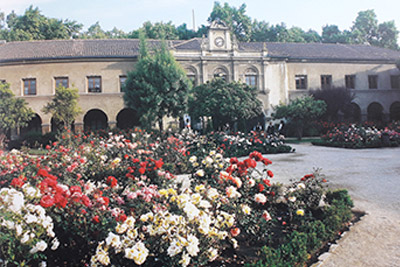
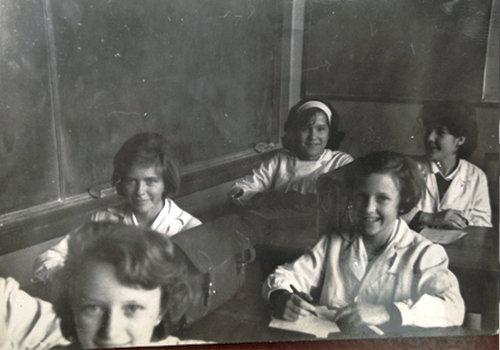
Santiago College (SC) was inaugurated during the War of the Pacific. In the mid-1880s, a house was rented at 17 Vergara Street for a thousand pesos a year. This three-story construction, with spacious gardens and playgrounds, was the origin of SC, a school founded by North American Methodist missionaries and characterized by avant-garde education.
The principles that guided the founders were: “every education system must develop and exercise physical, intellectual and moral abilities in order to prepare young people for important responsibilities as citizens, as members of social, political and commercial communities, as members of a family and home, and as devout followers of God. “
SC was founded on October 1, 1880, with the support and oversight of the Board of Foreign Missions of the Methodist Episcopal Church. As stated in the school constitution, “the purpose is to offer the girls and women of Chile a non-denominational Christian education that reaches the highest ideals.”

Despite all the efforts made by Ira Haynes La Fetra, the school started classes with only seven students, most of them the daughters of foreigners.
The school scandalized Santiago society with its girl’s gymnastics classes. From the beginning SC was absolutely bilingual. Kindergarten was another innovation that caused a stir, as it was the first time it had been implemented in the country.
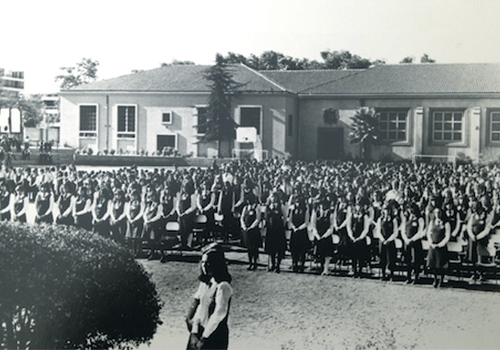
The first years were difficult: the teachers were scarce, the traditional families of the time considered the religious tolerance of SC a threat, the maintenance of the building was very expensive and it was not possible to install the desired boarding school at the current site.
In 1882, after a great effort by the founders, the school had a significant increase in students and it was necessary to move to a larger building at 219 Alameda de las Delicias.
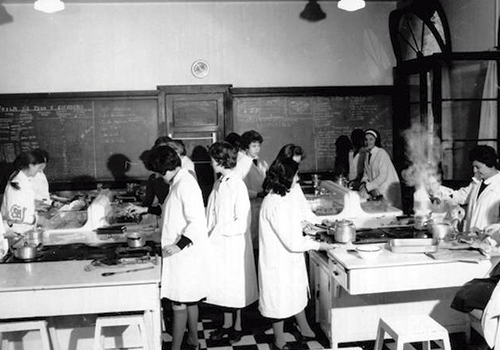
The Transit and Building Fund Society, formed by Bishop William Taylor, was in charge of the school and in 1886 they acquired land for 35,000 pesos on the corner of Agustinas and Brazil streets for a new building. This building would house SC for 45 years.
According to documents of the time, the school which opened in 1887 was the best establishment for women in terms of modernity, space and equipment. In addition to the boarding school dormitories, it had a large dining room, spacious classrooms, and music and painting facilities.
Among its 184 students were the daughters of former President Aníbal Pinto, former President Manuel Balmaceda and Captain Arturo Prat, as well as four granddaughters of former President Domingo Santa María.

In 1904, after 20 years working in SC, Adelaide Whitfield went to the United States with her husband, Ira La Fetra. In her farewell letter, she reaffirmed the central points that made the school famous: academic excellence, moral training, state-of-the-art teaching, highly qualified teachers, compulsory gymnastics and bilingualism.

With the departure of Mr. and Mrs. La Fetra, leadership of SC changed hands several times.
Between 1915 and the early 1920’s, the school lived through many changes and difficulties, although this did not affect the enrollment number.
At this time, Mary Firebaugh Swaney arrived from the US. At 28 years old and devastated by sadness over her recent widowhood, this teacher had embarked to South America to rebuild her life.
The North American colony in Santiago was proud of her and former students were motivated to return.
Mrs. Swaney was the transition director, and with her help, SC moved to a new building on Lota Street and Los Leones Avenue.

Elisa Parada de Miguel (class 1893), was the main benefactor of the new Los Leones building. Her husband, the American philanthropist Moses Miguel, offered to sponsor a project in Chile. She chose to breathe new life into her school.
SC had to move to the eastern sector of the city, where the new residential neighborhoods were located, as the Agustina’ facilities no longer met the needs of a cutting-edge education.
The new school would have rooms for 500 female students, a library, music rooms, modern physics and chemistry laboratories, a complete home economics department, a gym, spacious gardens, facilities for practicing outdoor sports and a boarding school for 150 girls.
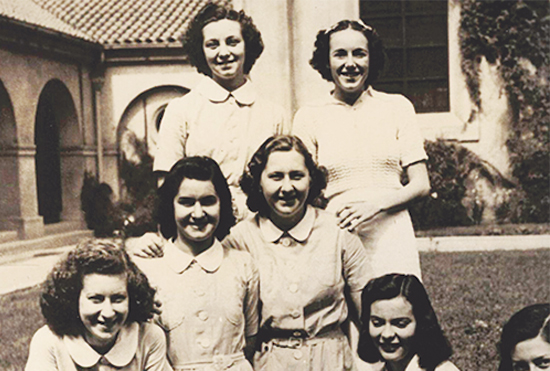
On October 1, 1930, the school celebrated its Golden Anniversary. In this ceremony, the director of the School, Mrs. Swaney, presented the Santiago College flag donated by Elisa Parada de Miguel. It was light blue in color and in the center was the symbol of education: a woman seated on a throne, crowned with laurels and surrounded by books. Around it the motto was embroidered: “Education dignifies”. Since that day the flag has been present in all school ceremonies, becoming an emblem for everyone.
In the three-day celebration, the first stone of the new school was laid. The event was attended by the President of Chile, Carlos Ibáñez del Campo, and various other important authorities at the time.
For the construction of the building, Josué Smith Solar and José Tomás Smith Miller were hired, a prestigious pair of architects at the time and who had the greatest experience in construction of educational establishments.

“May God bless each of you and, as always, keep the school in your heart.” With this phrase Miss Elizabeth Caton Mason ended each ceremony she presided over. For 27 years she inspired young women to persevere in the values that guided SC since its inception.
Elizabeth C. Mason was trained as an educator and professional in the United States and Europe. For many, the school’s golden age began with her arrival in 1933, as under her direction Santiago College grew and came to be considered one of Chile’s most important educational establishments for girls.
One of her greatest successes was to give considerable importance to culture and to modernize SC education to favor women. She passed on her knowledge of history, theater, literature, and the arts to the student body, and recruited the best singing, dancing, and drama teachers.

On the religious level, Miss Mason gave SC the openness and tolerance of creed that characterizes it to this day. For the ceremonies, she invited representatives of all the churches because, for her, the most important thing was values, which were not exclusive to any religion.
Miss Mason left an indelible mark on many generations who graduated from SC. Part of the traditions that continue to this day were her ideas, such as the Last Chapel and the caps, gowns and the evergreen chain in Commencement.
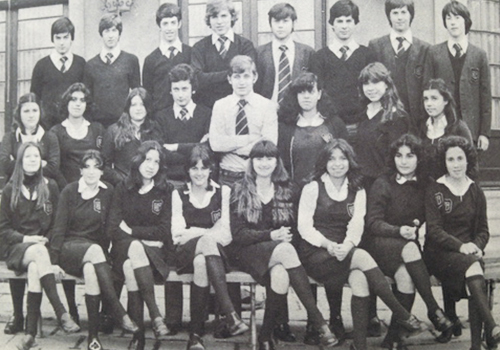
Santiago College opened its doors to boys in March 1972. The first students entered from pre-kindergarten to fourth grade and the first mixed class graduated in 1980, coinciding with SC’s 100 year anniversary.
In an interview published in the Alumni News in 1984, Rebeca Donoso, headmistress of SC at the time, referred to incorporating boys, noting that, “we are supposed to live in a mixed society in which men and women naturally coexist. Co-ed schools educate children better for the future, teaching them habits to help them coexistence harmoniously, which will serve them all their lives ”.

The school celebrated its centenary under the direction of Rebeca Donoso (class of 1959). However, the number of students and the sports practices that a mixed school demanded at that time was beginning to be limited by the Los Leones site.
In 1985 a purchase agreement was signed between the Trappist monks and the Santiago College Educational Foundation for the current school grounds. The site, which was three times the size of Los Leones, was acquired with the commitment that sports fields and classrooms would be built there within 20 years.
The challenge was then to build a 21st century school, without losing the tradition and identity of Santiago College.
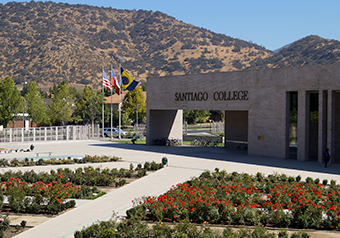
In 2013, the new Santiago College campus was inaugurated, an avant-garde architectural project that preserves tradition and looks to the future.
“From us to those who follow us: an inheritance full of responsibilities that, protected by these new walls, leaves the immense task of moving forward while all the while keeping your memory of history intact. Walk confidently with the perfect compass of the present supported by the deep roots of the Santiago College legacy. These roots cannot be cut or negotiated; instead are passed on from generation to generation through the centuries without losing the Alma Mater”, emphasized Lorna Prado Scott in the inauguration speech for the new campus.
Another primary objective for Miss Lorna is based on the importance of SC values: honesty, respect, responsibility, solidarity, perseverance and joy of living.
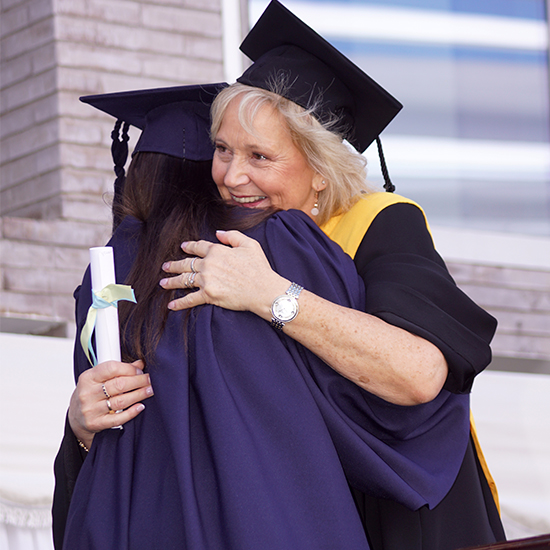
Lorna Prado Scott has had a leading role in this new stage. She is a former student, daughter of the well-remembered teacher Lorna Scott and was appointed by the High Council as Headmistress in November 2004.
Lorna graduated as an Elementary Teacher with a major in English and Physical Education from the University of Chile. In 1979, she obtained a scholarship in Education and Sports, and left for Germany where she lived for a year. In addition, she obtained a Master’s degree in Educational Administration and Management and in 1999 was accredited by the International Baccalaureate Organization (IBO) as an instructor of the Primary Years Program (PYP) to lead educational workshops in North America and Latin America.

When she was appointed headmistress of Santiago College, Lorna Prado – together with the High Council – made it a priority to develop a strategic plan to define the physical place where the school would be located for the next 100 years: the Los Trapenses land. “The school needs new facilities where we can have greater technological advances, more green areas, more recreation areas, parking, and safer entrances and exits,” explained Lorna.

Faced with the coronavirus pandemic, the school closed its physical doors to ensure the well-being of its students and families. This situation began to take effect on Monday, March 16, 2020, prior to the official resolution from the Ministry of Education that required all students in the country to be confined to their respective homes.
At Santiago College, the number one priority has always been its beloved students. This concern for their well-being was maintained in these trying times, always prioritizing their physical and emotional health. By the same token, with a great effort on the part of students, parents and teachers, the level of synchronous and asynchronous classes was maintained, implementing various innovative teaching platforms in the different levels such as Google Classroom, Turnitin, Maganabac, Seesaw, and the subject generated Google sites.

At the same time, teachers continued with various learning activities and traditional SC activities such as TOK, the online Tie Ceremony, Student’s Day, the 4th of July celebration, and the 18th of September Assembly, among many others.
The distance learning planning was designed under the guidelines of the International Baccalaureate (IB), where asynchrony implies greater autonomy for students so that they can adapt according to the needs of the family and their own personal approach to learning. This promotes self-discipline and self-inquiry, as opposed to a face-to-face system, which is based on the same experience for everyone.
This celebration honors Thanksgiving Day, which remembers the pilgrims who arrived in North America and after a year of work gave thanks to God for the fruits of their labor. The event is commemorated in an Assembly during the fall, where students make a symbolic delivery of non-perishable food collected by the community for charities.
With this ceremony, the school celebrates of the Independence of the United States, the country where the origins of SC are found. The different school levels organize their assemblies with songs, dances, typical costumes and speeches related to this date.
This date is celebrated with the appropriate solemnity honoring Chilean Independence, with teachers choosing different topics that allude to the historical events that marked the independence process of Chile.
In October, the school celebrates its anniversary, which is organized by the Student Council.

At the beginning of the school year the 12th graders are eager to receive the tie that distinguishes them as the new seniors, which will allow them to enjoy their privileges such as singing at school the melody “So we are seniors, seniors are we, singing together happy are we”, as a way of showing the joy at having reached the end of an important stage in their lives.
Likewise, seniors must behave in a manner that demonstrates that both the tie they wear and the special treatment they receive are the result of years of respect and loyalty to the principles and values that the school instills.

In November, the school presents its seniors with rings and medals. The medals were incorporated in 1980, the year in which the first boys’ class entered SC.
These symbols allude to the school life cycle as a vital stage that will determine the students’ future. The rings and medals bear the school seal, which has a female laureate figure together with the motto “Education dignifies”.
At the end of November or beginning of December, the Alumni Association officially welcomes the senior class of that year as the new members of their institution.
In this ceremony, the “English Award” is presented, established by Graciela Balbontín de Bravo, from the class of 1931, which honors the student who has obtained the highest grade point average in the last four years in the English. The award consists of a gold medal that is presented by the President of the Alumni Association.

The most moving celebration for students is called Last Chapel, because it is the last religious ceremony where seniors participate, and has its foundations in early SC spiritual life. In the past, students attended a series of assemblies, or chapels, throughout the year in which a section of the Bible was read and the Headmistress/Headmaster addressed a central theme from a spiritual point of view. Additionally, beautiful religious hymns were sung, and around Christmas time, Christmas carols were sung to prepare a celebratory atmosphere for the birth of Christ.
The Last Chapel consists of a farewell that the school offers to its seniors, which is characterized by a deep spiritual content and where the three religions that are taught at SC are represented: Catholic, Protestant and Jewish. It is attended by parent and guardians of the 12th grade, teachers and 11th grade students.
Once the Last Chapel is over, the juniors invite the seniors to a picnic that takes place outdoors, where they enjoy an afternoon in the company of their homeroom teachers. As a souvenir of that day, each senior receives a small gift from a junior who has been chosen for reasons of affinity or kinship.
On the morning of Commencement day, the seniors have breakfast with their homeroom teachers in the school dining room. The tradition of this shared moment goes back to the time when SC was a boarding school and that morning was the last day the boarders shared breakfast before graduation. Up to this day the 23rd Psalm is read, “The Lord is my shepherd, I shall not want”; then, in a more relaxed atmosphere, both homeroom teachers and seniors say a few short words about their time together.
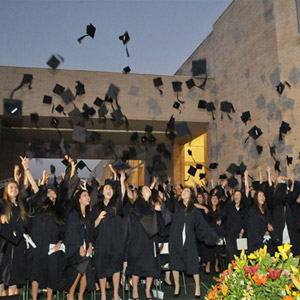
This word means the end of a stage, but, at the same time, the beginning of a new life. Traditionally, someone special is invited to dedicate a speech to seniors, who is always a prominent person: be it the rector of a university, an ambassador, a religious authority or a distinguished member of the national community. This solemn act takes place in the school Rose Garden, where everything is arranged to receive the senior’s families and friends.
Commencement begins with the seniors entering wearing their caps and gowns, escorted by the juniors who carry the “evergreen chain”. This chain is made with natural pine branches and represents the future of new generations. In previous years, the Police choir played Pomp and Circumstance as background music, but today this is performed by the school orchestra.
During this ceremony, the seven distinctions that the school only awards at the end of school life are awarded. The most significant is the Finer Humankind Award, followed by the Valedictorian Award, Salutatorian Award, Sportsmanship Award, Creativity Award and the ECIS Award.
Once the Commencement ceremony is over, the juniors attend the “Junior Prom”. The students wear the clothes with which they escorted the seniors: girls in the white dress and boys in the official school uniform. The dining room is decorated with flowers and balloons and the juniors happily celebrate being closer to their goal of being seniors.
In recent years, the Junior Prom has been held in the school dining room.
The Senior Ball is the last party of the entire graduating class, where graduates attend in the company of their parents and guardians. For this celebration, the girls wear party dresses and the boys wear suits. The venue is usually a large establishment which can accommodate a large number of people. Special attention is paid to the decoration and the music to ensure its success. The dance is organized by the parents, and the Headmistress/Headmaster and homeroom teachers of each class are invited.
The party begins with a cocktail followed by a father-daughter/mother-son waltz. The parents and other guests then leave before dinner is served. The party and dancing go on until dawn and then ends with a nice breakfast.
The Senior Ball is the last school occasion when the entire senior class can share time together and say farewell to their secondary school life.
It is the highest distinction that Santiago College confers on its graduates. The Finer Humankind Award was instituted in 1925 and symbolizes a set of values that students have learned during their school life: tolerance, joy of living, responsibility, integrity, courtesy, leadership, solidarity, and high academic commitment.
By reaching their senior year, all seniors should have achieved these values. As in practice it is impossible to give everyone this distinction, the chosen student symbolizes these ideals and represents their entire graduating class.
It is the distinction awarded by Santiago College to the student who has obtained the highest grade point average during the last four years of study.
It is the distinction awarded by Santiago College to the student who has obtained the second highest grade point average during High School.
This award aims to distinguish the boy and girl who, without necessarily being the best athletes, embody sportsmanship in its broadest sense: losing with honor, winning with modesty, contributing to the improvement of their teams and giving the best of themselves in terms of effort and support to others. This award was instituted in 1976 and the winners are chosen by the Physical Education Department.
This distinction has been awarded by the Alumni Association since 1992. The award consists of a gold medal, which rewards the outstanding student for their creativity. The distinction was instituted to commemorate the 100th anniversary of the birth of Mary Swaney and Elizabeth Mason. The Alumni president presents the medal at the Commencement ceremony, as established in the bylaws.
The International Understanding Award was presented for the first time at the beginning of 1992 by the European Council of International Schools. The objective of this award is to recognize the senior who best represent the principles of an international citizen and who has a clear perspective of the need for cooperation between people of different origins.
Mrs. Elizabeth Fox, former headmistress of SC, who instituted this award, defined it as an “Award that is given to a student who is a good representative of their country, with a positive attitude towards the life and culture of others, and the ability to communicate in at least two languages. He/she must be a contributing force in the life of the school with the ability to bring different people together into a sense of community, thus furthering the cause of better international understanding”.